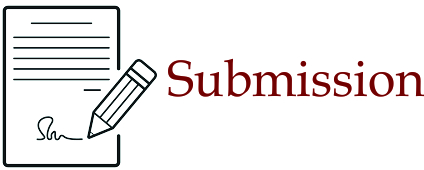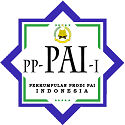Constitutional Piety: The Integration of Anti-Corruption Education into Islamic Religious Learning Based on Neuroscience
Abstract
Abstract. The new phenomenon of corruption cases that ensnared Islamic religious leaders in Indonesia indicates that so far Islamic education in Indonesia has not taught anti-corruption. As a result, religious leaders only have ritual and social piety, but do not yet have constitutional piety. From a neuroscience perspective, Corruptor's brain is basically normal but not healthy. The purpose of this study is to find a conceptual model of the integration of anti-corruption education in neuroscience-based Islamic religious learning to develop character constitutional piety. The research approach used is qualitative method in the form of Creswell model library research. Data sources are obtained from literature in the field of Islamic education, anti-corruption, and neurosciences. The Sugiyono model was performed to collect the data, namely by searching related literature, both manually and digitally. The data were then analyzed using Moleong’s content analysis. The results showed that the character of constitutional piety could be developed in students through anti-corruption education integrated with neuroscience-based Islamic religious learning. Seven forms of corruption (detrimental to the state, bribery, embezzlement, extortion, cheating, conflict of interest and gratification) are examined in perspective of jinayah jurisprudence and or anti-corruption jurisprudence (al- ghûl, riswah, khiyanat, ghasbah) then formally configured. The anticorruption education model in Islamic religious learning based on neuroscience has the potential to develop the character of ritual, social and constitutional piety integrally.
Keywords. Islamic Education; Anti-corruption; Neuroscience; Ritual Piety; Social and Constitutional.Full Text:
38 - 46References
Alim, M. W. dan H. (Ed.). (2017). Jihad Nahdlatul Ulama Melawan Korupsi. Jakarta: Lakpesdam-PBNU.
Anwar, S. (2006). Fikih Anti Korupsi Perspektif Ulama Muhammadiyah. Jakarta: Majelis Tarjih dan Tajdid Pimpinan Pusat Muhammadiyah.
Creswell, J. (2015). Riset Pendidikan: Perencanaan, Pelaksanaan, dan evaluasi Riset Kualitatif & Kuantitatif. Yogyakarta: Pustaka Pelajar.
Fauzi, A., & Hamid, A. (2018). Islamic Education in Malaysia. In Handbook of Islamic Education, International Handbooks of Religion and Education 7 (pp. 745–761). Panang, Malaysia: Springer International Publishing AG.
Gong, T., Wang, S., & Ren, J. (2015). Corruption in the Eye of the Beholder: Survey Evidence from Mainland China and Hong Kong. International Public Management Journal, 18(3), 458–482. https://doi.org/10.1080/10967494.2015.1057629
Hidayat, A. (2017). Peaceful in Pesantren : The Involvement of Santri ’ s Peaceful Environment and Personality. Al-Ta’lim Journal, 24(2), 79–92.
Hidayat, M. A. (2017). Ibadat, The Body And Identity: Islamic Rituals And The Construction Of Muslim Identity. The Journal of Society & Media, 1(2), 1–17.
Ikrar, T. (2016). Ilmu Neurosains Modern. Yogyakarta: Pustaka Pelajar.
ITB, T. T. I. salman. (2014). Tafsir Salman: Tafsir Ilmiah Juz’amma. Bandung: Mizan dan YPM Salman ITB.
Jati, W. R., & Pusat. (2015). Sufisme Urban di Perkotaan: Konstruksi Keimanan Baru Kelas Menengah Muslim. Jurnal Kajian & Pengembangan Manajemen Dakwah, 05(02), 175–199.
Jensen, E. (2000). Brain-Based Learning, The New Science of Teaching & Training. California: Corwin Press.
Karsona, A. M. (211AD). Pengertian Korupsi. In Pendidikan Anti Korupsi untuk Perguruan Tinggi (p. 23). Jakarta: Kementerian Pendidikan dan Kebudayaan RI Direktorat Jenderal Pendidikan Tinggi.
Kong, D. T. (2017). An economic – genetic theory of corporate corruption across cultures : An interactive effect of wealth and the 5HTTLPR-SS / SL frequency on corporate corruption mediated by cultural endorsement of self-protective leadership. Personality And Individual Differences, 63 (November), 106–111. https://doi.org/10.1016/j.paid.2014.01.061
KPK. (2006). Memahami Untuk Membasmi. Jakarta: KPK.
Lexy J Moleong. (2014). Metodologi Penelitian Kualitatif Edisi Revisi. Bandung: Remaja Rosdakarya. Retrieved from http://www.bukukita.com/Referensi/Referensi-Umum/129449-Metodologi-Penelitian-Kualitatif-Edisi-Revisi.html
Li, H., Gong, T., & Xiao, H. (2016). The Perception of Anti-corruption Efficacy in China: An Empirical Analysis. Social Indicators Research, 125(3), 885–903. https://doi.org/10.1007/s11205-015-0859-z
McKlveen, J. M., Myers, B., & Herman, J. P. (2015). The Medial Prefrontal Cortex: Coordinator of Autonomic, Neuroendocrine and Behavioural Responses to Stress. Journal of Neuroendocrinology, 27(6), 446–456. https://doi.org/10.1111/jne.12272
Muqoyyidin, A. W. (2013). Dialektika Islam Dan Budaya Lokal Jawa. Ib’da Jurnal Kebudayaan Islam, Vol. 11, N.
Mustakim, M. (2013). Wawasan Al-Quran tentang Pendidikan Anti Korupsi. Jurnal Ilmu Tarbiyah “At-Tajdid,” 2(1).
Nownes, A. (2017). Lobbying: The preconditions of an anti-corruption promise. Anti-Corruption Resource Centre (Vol. 4). Australia.
Pasiak, T. (2018). Spiritual Neuroscience: Behavioral Implication in Health and Leadership. Manado: POPS-LPPM Unsrat.
Pasiak, T. (2016). Tuhan Dalam Otak Manusia : Mewujudkan Kesehatan Spiritual Berdasarkan Neurosains. Mizan, Bandung.
Pasiak, T. (2012). Pendidikan Karakter sebagai Pendidikan Otak. In Mengatasi Masalah Narkoba dengan Welas Asih. Jakarta: Gramedia Pustaka Utama.
Pasiak, T. (2008). Revolusi IQ/EQ/SQ : Menyingkap Rahasia Kecerdasan Berdasarkan Al-Quran dan Neurosains Mutakhir. Bandung: Mizan Bandung.
Rumadi. (2017). Taat Beribadah Tetapi Banyak Korupsi.
Sa’adi. (2011). A survey on the development of Islamic higher education in Indonesia : an epistemological review. IJIMS, Indonesian Journal of Islam and Muslim Societies, 1(1), 151–169.
Setiawan, B. (2016). Tradisi Ziarah Kubur: Agama Sebagai Konstruksi Sosial Pada Masyarakat di Bawean, Kabupaten Gresik. Biokultur, 5(2), 247–261.
Sugiyono. (2015). Metode Penelitian Pendidikan: Pendekatan Kuantitatif, Kualitatif dan R&D. Jakarta: Alfabeta. Retrieved from https://www.belbuk.com/metode-penelitian-pendidikan-pendekatan-kuantitatif-kualitatif-dan-rd-p-10743.html
Sumaryati, Suyadi, D. H. (2019). Pendidikan Antikorupsi dalam Keluarga, Sekolah dan Masyarakat. Yogyakarta: UAD Press.
Suyadi. (2015a). Dasar-Dasar Pemikiran Menuju Ilmu Neurosains Pendidikan Islam. Yogyakarta: Sunan Kalijaga State Islamic University.
Suyadi. (2015b). Seri Pendidikan Antikorupsi Untuk SD/MI Kelas 1-6 Pendekatan Tematik-Integratif. Yogyakarta: Andi Ofset.
Suyadi. (2016). Teori Pembelajaran Anak usia Dini Dalam Kajian Neurosains. Bandung: Rosda Karya.
Suyadi. (2018a). Integration Of Anti-Corruption Education Wth Neuroscience Approach (Multi-Ccase Study In Brain Friendly PUD: I Sleman Kindergarten Yogyakarta). Inferensi, Jurnal Penelitian Sosial Keagamaan, 12(2).
Suyadi. (2018b). The Synergy of Arts, Neuroscience, and Islamic In Early Childhood Learning In Yogyakarta. Tarbiya: Journal of Education in Muslim Society, 5(1), 30–42.
Umam, M. H. (2013). Pandangan Islam tentang Korupsi. Teosofi: Jurnal Tasawuf Dan Pemikiran Islam, 3, 462–482.
DOI: https://doi.org/10.18860/jpai.v6i1.8307
Refbacks
- There are currently no refbacks.
Copyright (c) 2019 J-PAI: Jurnal Pendidikan Agama Islam

This work is licensed under a Creative Commons Attribution-ShareAlike 4.0 International License.
...............................................................................................................................................................
Editorial Office:
Fakultas Ilmu Tarbiyah dan Keguruan
Universitas Islam Negeri Maulana Malik Ibrahim Malang
Jalan Gajayana 50 Malang, Jawa Timur, Indonesia 65144
Phone (0341) 552398, Faximile (0341) 552398
E-mail: jpai@uin-malang.ac.id
J-PAI: Jurnal Pendidikan Agama Islam is licensed under a Creative Commons Attribution-ShareAlike 4.0.
...............................................................................................................................................................
Indexed by:



















